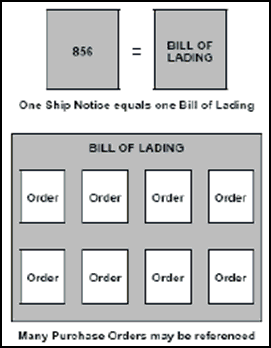
From the ANSI X12 Standards Board:
"This Draft Standard for Trial Use contains the format and establishes the data contents of the Ship Notice/Manifest Transaction Set (856) for use within the context of an Electronic Data Interchange (EDI) environment. The transaction set can be used to list the contents of a shipment of goods as well as additional information relating to the shipment, such as order information, product description, physical characteristics, type of packaging, marking, carrier information, and configuration of goods within the transportation equipment. The transaction set enables the sender to describe the contents and configuration of a shipment in various levels of detail and provides an ordered flexibility to convey information. The sender of this transaction is the organization responsible for detailing and communicating the contents of a shipment, or shipments, to one or more receivers of the transaction set. The receiver of this transaction set can be any organization having an interest in the contents of a shipment or information about the contents of a shipment."
When the merchandise is packaged and put on the truck, the ASN is the EDI document that is sent to the recipient. The ASN tells the recipient what is contained in the shipment, down to the level of what merchandise is in each carton.

Each ASN is a single shipment. There can be one or multiple shipments on a truck, and each one would have an associated ASN. Each shipment represents a single batch of merchandise bound for a single Ship-To location. Each shipment will contain one or multiple orders. An order can comprise of one or many cartons. Each carton (usually) has a label on it with a bar code. This label physically ties the carton to the EDI document. The following is an example of a label.
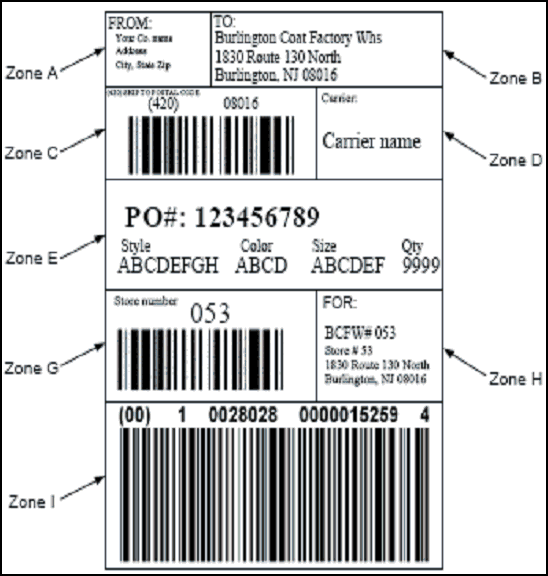
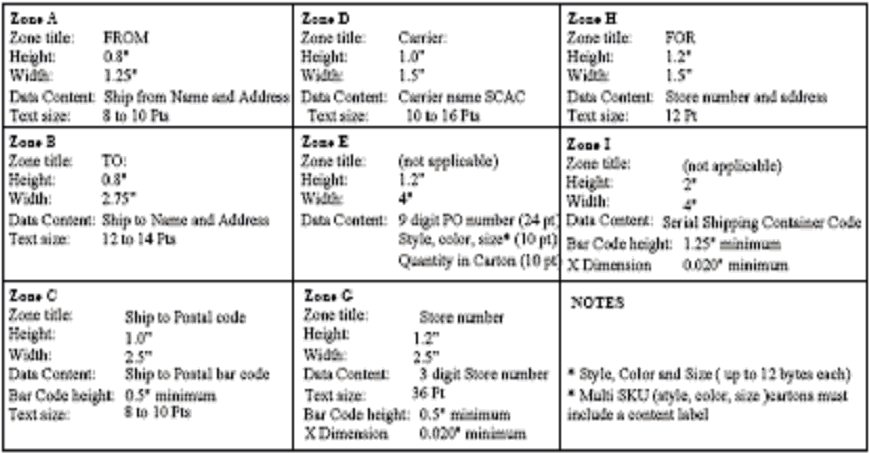
ASNs are typically packed using one of two methods. Pick-Pack is a multiple quantity of one or more sku in a carton. Standard Pack is all items in the carton are the same.
The following diagram is a Pick-Pack example.
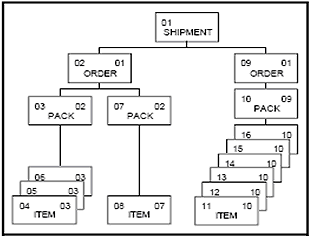
The following is a Standard Pack example.
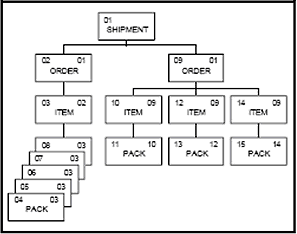
You may find pick-pack in the mass-market industries, such as garment. A single box contains three dozen shirts in an assortment of sizes and colors. An example of standard pack is the grocery business, where a single carton of cereal contains 12 boxes of the same item.
As you can see from the two diagrams, the ASN contains several levels of nested information. The ASN levels are called Shipment, Order, Tare, Pack, and Item.
Shipment contains data that reflects all of the goods being transported.
There is one Shipment level per ASN. Next is the Order level. There can be multiple Order levels on a single ASN. Each Order level corresponds to a purchase order from the trading partner. This level includes:
Beneath the Order level, depending on the type of ASN, will be one or several looping structures that denote the packaging and what is inside the packaging. A tare is usually a pallet full of boxes that has been sealed with plastic (shrink) wrap. The pallet has a single bar code, called a license plate. The boxes on the pallet may or may not be individually labeled, but the pallet is usually not broken down until it reaches its final destination. A Tare level usually contains a bar code number.
The Pack level contains information about the carton. In most cases, it contains nothing more than a bar code number.
For common carrier, this would be the UCC128 (GS1) 20 digit bar code. For small package services such as Federal Express or UPS this would be the package tracking number.
The Item level contains information about the merchandise.
A pick-pack style ASN is ordered SOPI (Ship, Order, Pack, Item). A standard pack ASN would be ordered SOIP (Ship, Order, Item, Pack). Pick-pack has one or many items per carton, and standard pack has one or many cartons per item.
At the beginning of each segment is the HL segment.
Not all levels are required. It is perfectly fine to have SOI (no pack labels), although you would probably show the items in summary rather than box-by-box details. You could also have SOT (tare with no item details). The contents and details are subject to agreement by the partners.
If you cannot figure out the type of looping, BSN05 usually contains a code that will tell you.
Unfortunately BSN05 is not a mandatory element.
This tutorial guides you through the following steps.
| iWay Software |